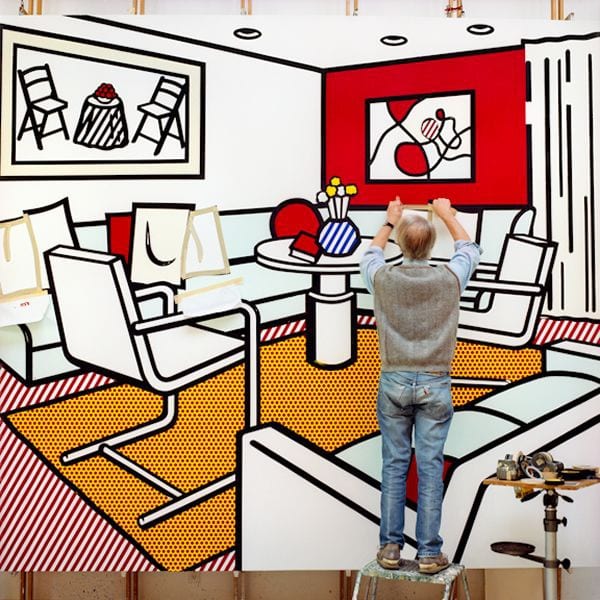
By the late 1990s, Roy Lichtenstein had long established himself as a master of the Pop Art movement. His signature Ben-Day dots and bold outlines had transformed comic book panels and commercial graphics into icons of high art. But in his Interiors series, created between 1990 and 1997, Lichtenstein turned his lens inward. Rather than zooming out on the dramatic action of pop culture, he shifted focus to the stillness of domestic space, rendered, of course, with his unmistakable wit and stylized hand.
Each Interior piece is a world in itself: a living room, bedroom, or studio frozen in time, devoid of people but overflowing with patterns, textures, and visual references. Furniture, mirrors, potted plants, rugs, and framed art all populate these scenes, often quoting Lichtenstein’s earlier works or nodding to the broader history of art, from Matisse to Mondrian. The result is a visual paradox: spaces that feel both lived-in and artificial, familiar and eerily pristine.
What makes the series so compelling is Lichtenstein’s ability to turn the mundane into the monumental. A lamp, a chair, or a mirror becomes just as iconic as a comic book heroine. The spaces are hyper-stylized, rendered with his signature flatness and comic-book palette, yet they pulse with personality. By eliminating human figures, Lichtenstein invites the viewer to step inside and to become part of the composition, reflecting on the artifice of our own environments.
Though playful on the surface, Interiors is also a sophisticated meditation on image, perception, and self-reference. These works are filled with paintings within paintings, winks to his past oeuvre, and subtle commentary on the act of viewing itself. In many ways, the Interiors serve as a late-career self-portrait, one in which Lichtenstein surveys the visual language he spent decades perfecting, now reimagined as a space to inhabit rather than simply observe.
For collectors and viewers alike, Lichtenstein’s Interiors offer a rare glimpse into a quieter, more introspective side of Pop Art, where the home becomes a gallery, and every object is elevated through the lens of style, irony, and reflection.
